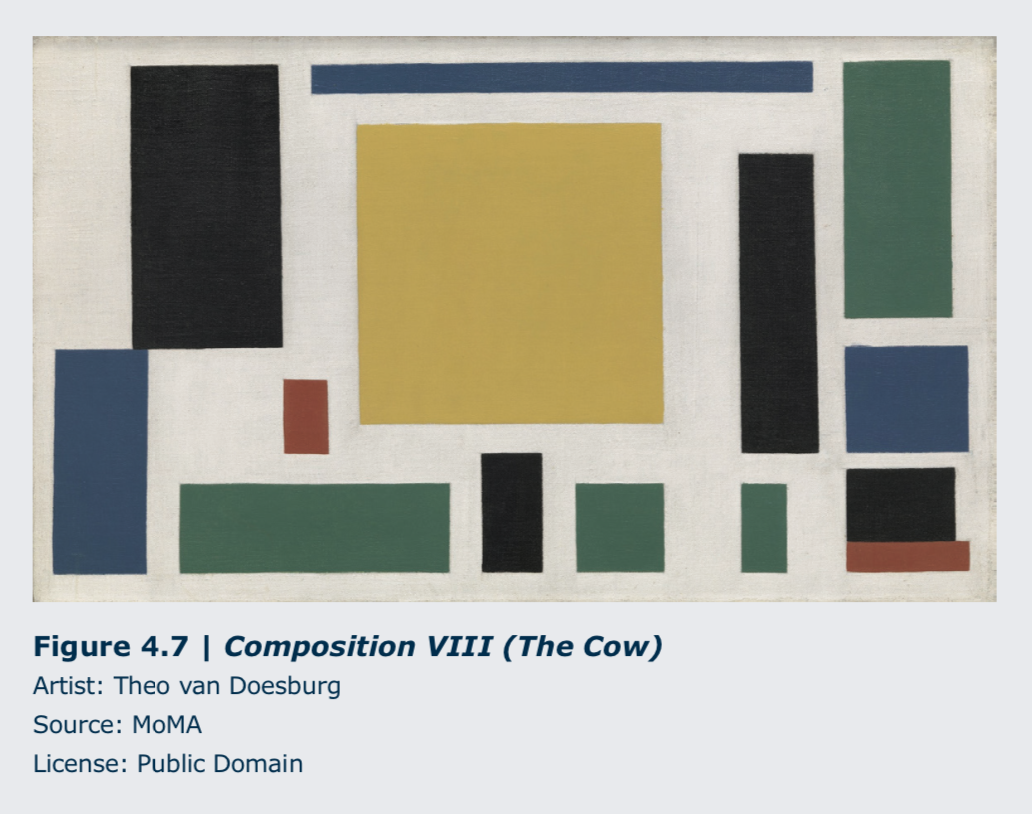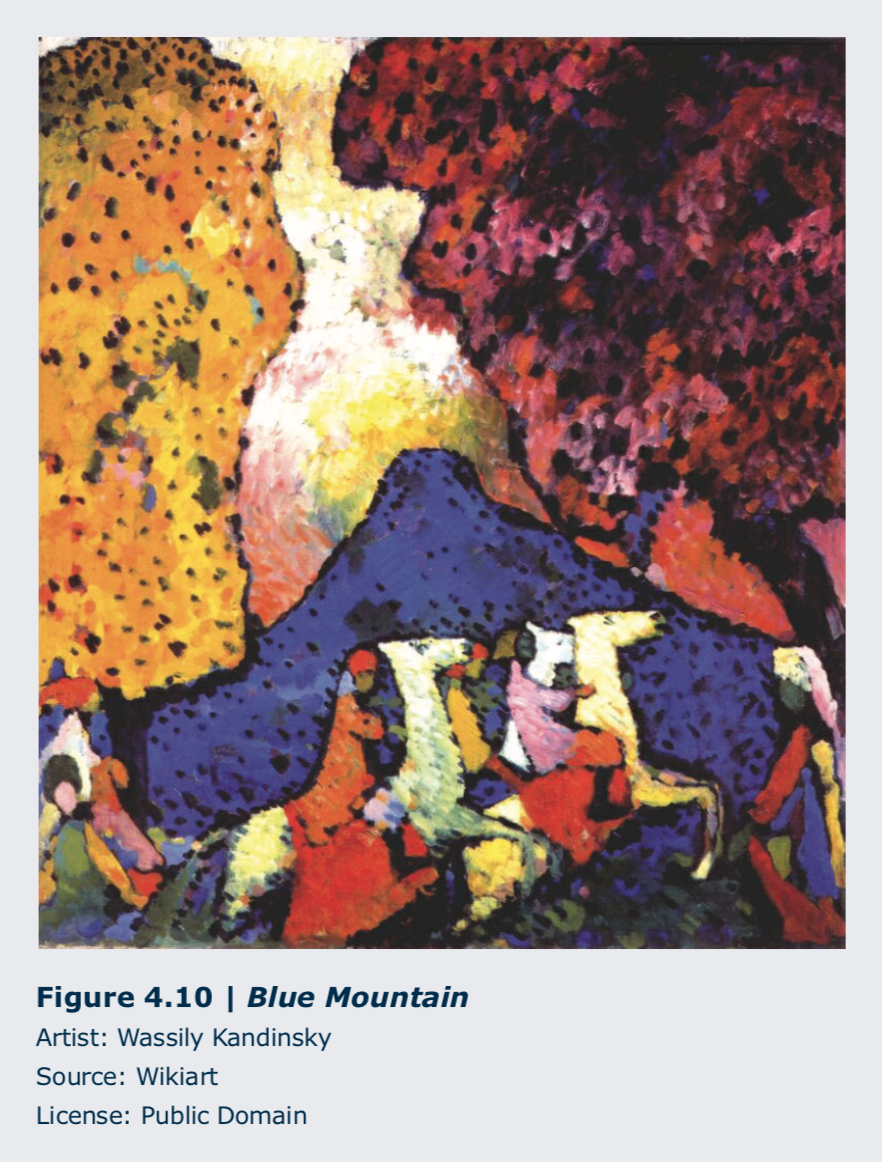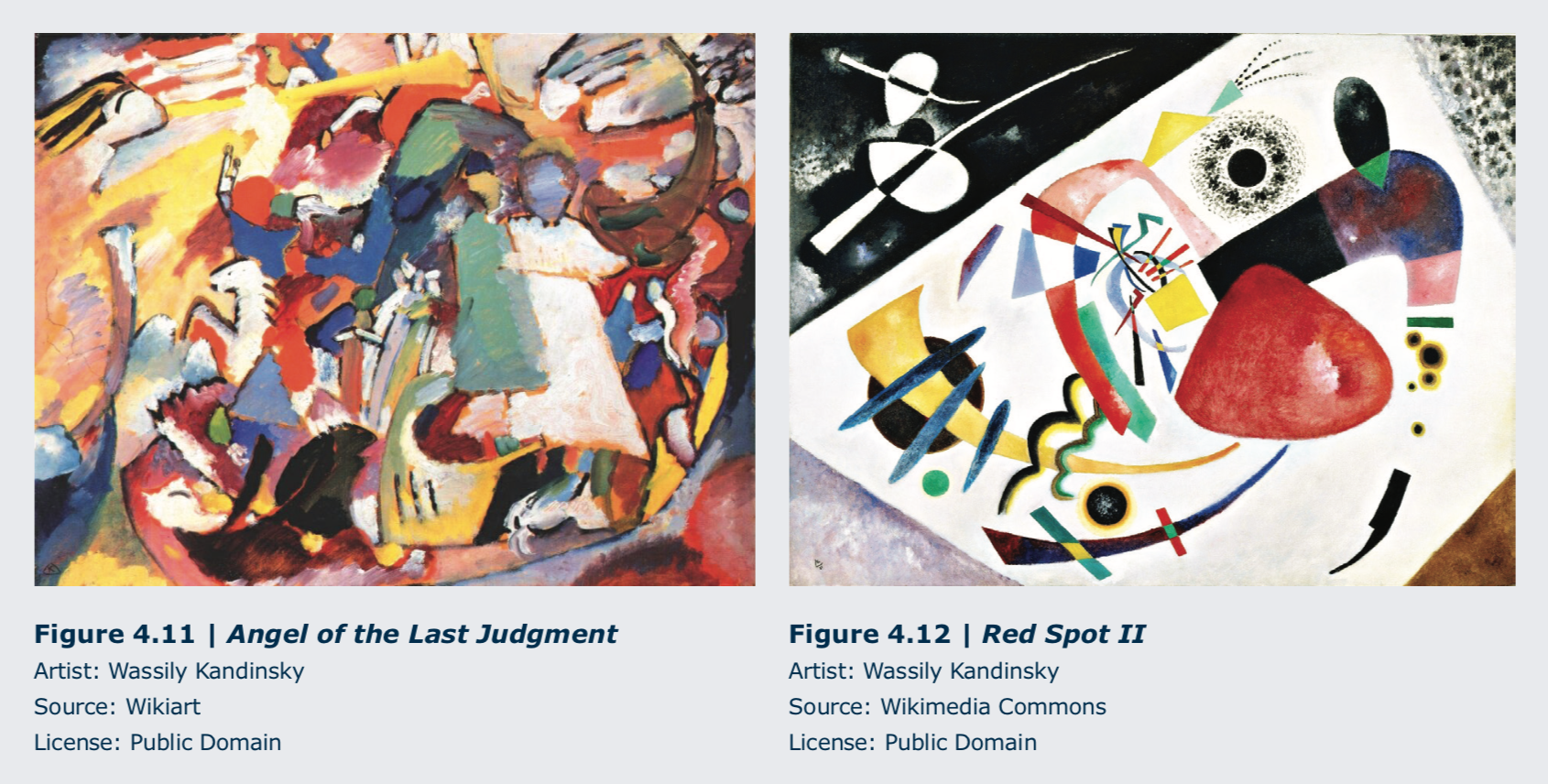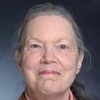1.5.1: Types of Representation in Art
- Page ID
- 156839
\( \newcommand{\vecs}[1]{\overset { \scriptstyle \rightharpoonup} {\mathbf{#1}} } \) \( \newcommand{\vecd}[1]{\overset{-\!-\!\rightharpoonup}{\vphantom{a}\smash {#1}}} \)\(\newcommand{\id}{\mathrm{id}}\) \( \newcommand{\Span}{\mathrm{span}}\) \( \newcommand{\kernel}{\mathrm{null}\,}\) \( \newcommand{\range}{\mathrm{range}\,}\) \( \newcommand{\RealPart}{\mathrm{Re}}\) \( \newcommand{\ImaginaryPart}{\mathrm{Im}}\) \( \newcommand{\Argument}{\mathrm{Arg}}\) \( \newcommand{\norm}[1]{\| #1 \|}\) \( \newcommand{\inner}[2]{\langle #1, #2 \rangle}\) \( \newcommand{\Span}{\mathrm{span}}\) \(\newcommand{\id}{\mathrm{id}}\) \( \newcommand{\Span}{\mathrm{span}}\) \( \newcommand{\kernel}{\mathrm{null}\,}\) \( \newcommand{\range}{\mathrm{range}\,}\) \( \newcommand{\RealPart}{\mathrm{Re}}\) \( \newcommand{\ImaginaryPart}{\mathrm{Im}}\) \( \newcommand{\Argument}{\mathrm{Arg}}\) \( \newcommand{\norm}[1]{\| #1 \|}\) \( \newcommand{\inner}[2]{\langle #1, #2 \rangle}\) \( \newcommand{\Span}{\mathrm{span}}\)\(\newcommand{\AA}{\unicode[.8,0]{x212B}}\)
Overview
Representational (realistic), Abstract, and Non-representational (or non-objective) Artworks
Representation and Abstraction
- In the broadest terms, if the work has visual reference to the phenomenal world, we consider it to be representational.
- To some extent, all works are also abstract, in that they might remind us of what we see in the phenomenal world by only reflecting some physical feature(s) rather than detailing the object, place, or person itself. Having said that, we can proceed to see art in terms of its relative representation or relative abstraction of the original form.
- Rosa Bonheur (1822-1899, France) depicted a variety of animals in great detail with regard to their anatomy and physiognomy and took great care to render her illustrations with fidelity to the appearance of the actual animals she had observed. (Figure 4.3)
- She deepened her own knowledge and honed her skills by visiting farms, veterinarian dissections, and slaughterhouses in order to develop extensive knowledge of her preferred subject matter, with which she created imagery of animals and other features of rural farm life.
- Her cows would be correctly described as very naturalistic in appearance their forms are quite similar in appearance to actual cows.
- For more information about Representational Art, visit Tate Museum
- For more information about Abstract Art, visit Tate Museum

- In comparison, if we examine the renditions by folk artist Edward Hicks (1780-1849, USA), we see cows that are much less rigorous in their resemblance, most likely the result of his not having had exacting training and practice in precise replication.
- He simplified landscape settings that emphasized narrative and symbolic messages rather than exact proportions and details.


- The Yellow Cow by Franz Marc (1880-1916, Germany) clearly does not slavishly reproduce natural appearances, but instead seeks to convey through abstraction a sense of light-hearted lyrical expression for the animal. (Figure 4.5)
- To achieve this end, Marc made an expression that carries messages about what he thought and felt about his subject.
- Marc created a great many images of animals in nature that were metaphorical reflections of his views of mankind and the human spirit. Such a movement towards abstraction often derives from the artist’s wish to express an emotional or intellectual commentary on the subject, or to use the subject as a starting place to diverge from visual appearances of the purely physical phenomenal world in order to create a statement of some other ideas.


- Another artist bearing investigation in this regard is Theo van Doesburg (1883- 1931, Netherlands), who used his own philosophical probing to frame a systematic path from naturalism in his renditions of the cow to an abstraction that is visually quite far removed from what most of us see in the phenomenal world. (Figure 4.6)
- Beginning with a series of exploratory sketches, he sought to reduce the linear forces of a cow’s form to the three he thought were essential components of the physical and metaphysical world, that is, vertical, horizontal, and diagonal, while reducing the three dimensions of the cow’s form to the painting’s two-dimensional surface.
- At the same time, he tried to simplify the forms and volumes, progressively creating a strongly abstracted picture that few of us would likely recognize as of a cow if we were not led through the process by which he developed the image.
- Indeed, we have evidence of the process and its result in Composition VIII (The Cow), a fully developed instruction that provides us with great insight into Van Doesburg’s train of thought and work, as well as his process of abstraction. (Figure 4.7)
- Representation, then, shows us some broad vision of what we see in the original, be it a person, landscape, interior, event, or such, with some level of detail. To one degree or another, all art is abstract in that it is not the original form, but instead the artist’s response to the original form rendered in artistic terms, although, clearly, not all of it is so strongly abstracted that we lose the plainer references to the physical world.
Non-Representational or Non-Objective

- Non-representational or Non-objective art defines a type of abstract art that is usually, but not always, geometric and aims to convey a sense of simplicity and purity
- Non-representational art and non-objective art that has no derivation from figures or objects.
- Stories abound about the era in art and the push from abstraction to non-representational, with several artists claiming to have led the breakthrough.
- The first artist to use the term non- objective art, however, seems to have been Aleksandr Rodchenko (1890-1956, Russia), (Spatial Construction no. 12, Aleksandr Rodchenko: www.moma.org/interactives/exh...truct_jpg.html; Assembling for a Demonstration, Aleksandr Rodchenko: www.moma.org/collection/works/45090?locale=en) and its most active early theorist and writer was probably Vasily Kandinsky (1866-1944, Russia, lived Germany and France). (Figures 4.10, 4.11, and 4.12)
- For more information about Non-objective Art, visit Tate Museum



